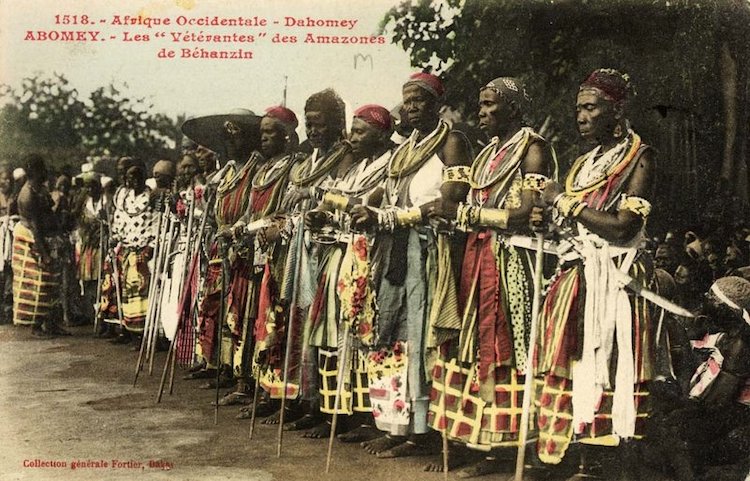By Lisa Vives, Global Information Network
NEW YORK (IDN) — The only documented female army in modern history was that of the Kingdom of Dahomey—now southern Benin—which, by the 1800s, had thousands of female troops.
In September, a film version that portrays the lives of these warrior women will be seen in cinemas around the country. In the meantime, a trailer of the film can be seen on YouTube. It features Viola Davis and Hero Fiennes.
“The Sacred Ibis” posting on YouTube, explains that the Kingdom of Dahomey was located in present-day Benin from 1600-1904 and became a regional power in the 18th century. The Dahomey Mothers, known as the Agooji, were the all-female army trained to kill while striking fear in the European colonizers.
The King often picked them as teenagers for their strength and beauty. By 1800, up to 4000 women were fighting for the Kingdom. They live on through dances performed in Benin today.
Nanlèhoundé Houédanou is a survivor. “My Amazon was gentle,” said Houédanou, who, at 85, is one of the last people on Earth to have grown up with one. “She was known for protecting children,” she told the Washington Post.
Researchers have spent decades combing through European and West African archives to craft a portrait from the jottings of French officers, British traders and Italian missionaries.
Of close to 3,000 comments on YouTube, most were very positive. “It is incredibly rare that goosebumps and complete awe overwhelm me the instant a trailer begins. This changes that!” wrote Derrick Ensey.
“Everything about this is epic on an astronomical level. The most subtle thing about it is the TIMING. At a time when women are being attacked, this is total female empowerment right here. Never underestimate a unifying message!
“The previous depictions of the all-women Agojie warriors, also known as the Amazons, portrayed the female soldiers as “beasts” and “mannish. Davis and director Gina Prince-Blythewood sought instead to bring the authenticity of the story to the big screen instead of racial stereotypes.”
“These women were fascinating and didn’t need to be embellished or glossy,” Prince-Blythewood told Vanity Fair. “I wanted it to be real and visceral and raw. We didn’t want to show them as just one thing—badass women who killed. They also laughed and loved and cried. We wanted to show their full humanity, not just the cool part that that would look good in a trailer.”
“The French made sure this history wasn’t known,” said the Beninese economist Leonard Wantchekon, a professor of international affairs at Princeton University. “They said we were backward, that they needed to ‘civilize us,’ but they destroyed opportunities for women that existed nowhere else in the world.”
Now a team of Beninese researchers is working to reshape the narrative. For the last three years, historians at the African School of Economics, a private university that Wantchekon founded near Cotonou, the capital, have been tracking down descendants of Amazons across the nation
They aim to glean local memories for a book that can be taught in schools —to present a three-dimensional view of the real Amazons. Only 50 of the women are thought to have survived the two-year war with France. The last died in the 1970s. [IDN-InDepthNews — 02 August 2022]
Photo: Veterans at the annual meeting in Abomey in 1908. Wikimedia Commons.
IDN is the flagship agency of the Non-profit International Press Syndicate.
This article is published under the Creative Commons Attribution 4.0 International licence. You are free to share, remix, tweak and build upon it non-commercially. Please give due credit.

